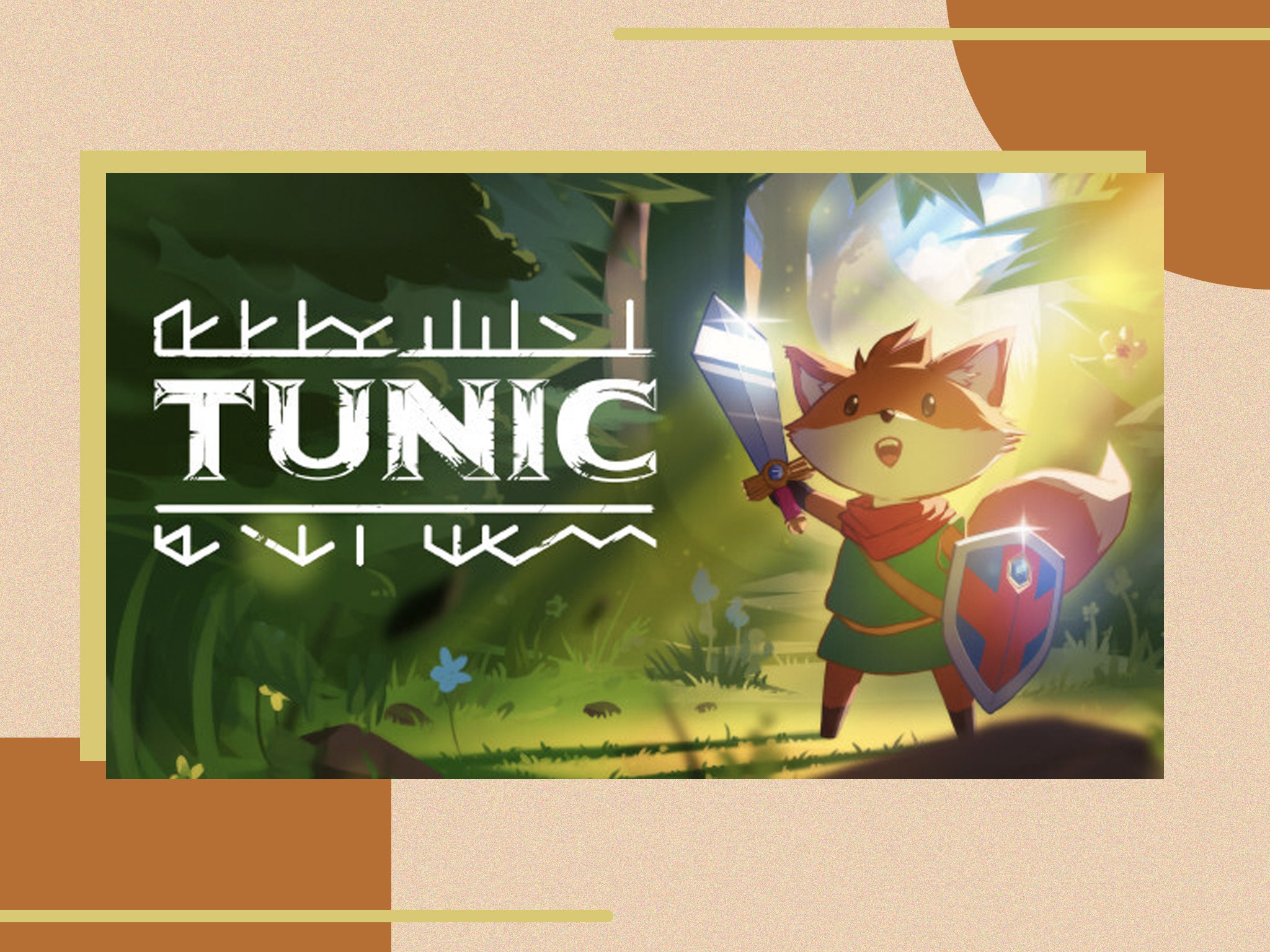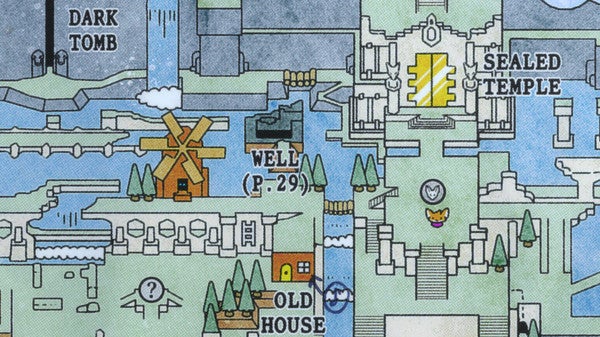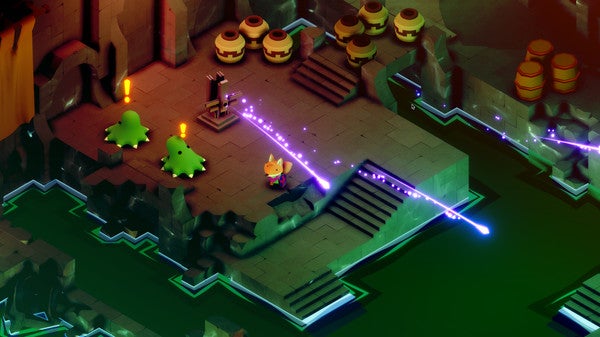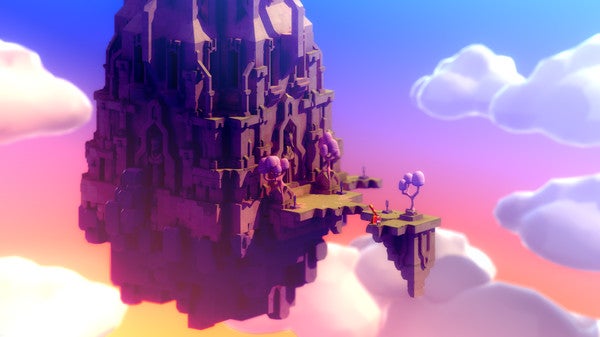The Independent's journalism is supported by our readers. When you purchase through links on our site, we may earn commission.
Tunic review: A beautiful love letter to classic adventure games
This 12-hour title is waiting to be discovered, one page at a time

At a certain point in time, video games stopped including instruction manuals and we were worse off for it.
Not only could they fill in the gaps of the story that consoles like the Snes and Sega mega drive weren’t able to provide, they also contained unique art and tips on how to defeat enemies. If you’re too young to remember, then Nintendo has an excellent library of what they used to look like, to give you a better idea.
It’s a somewhat defunct art now. As function overtook form, they became more of an added bonus as games became more than capable of providing that information on screen rather than in print, before gradually being phased out entirely.
But having a physical companion to assist you on your adventure is something modern games miss out on. Being able to scrawl down the margins and assemble notes on areas to return to is part of what makes games like Legend of Zelda: A Link to the Past and Super Metroid feel like grand mysteries, despite their technical limitations, by adding an extra layer of complexity outside the confines of a single cartridge.
If you’re inclined to agree with that sentiment, then Tunic is the game for you.
How we tested
We played the PC version of Tunic for around 12 hours, which gave us time to complete the main storyline and explore some of the game’s many secrets.
‘Tunic’: £24.99, Steampowered.com

Rating: 9/10
- Consoles: PC, Xbox series X/S
- Publisher: Finji
- Release Date: 16 March 2022
- Age rating: 7+
Story
A young fox wakes up on a beach in a mysterious land. Unarmed and at the mercy of the hostile creatures that inhabit it, our hero must venture into this world, discover its secrets and uncover its various treasures, some of which are locked away in hidden temples.
The various signposts that can be found in the immediate area are in a cryptic language, revealing very little. Occasionally one of these signs may show further basic text – such as “Hero’s Grave” – but otherwise, this world is a mystery and will remain so until the right pieces have come together.
It’s a simple premise that’s executed clearly, without revealing the full extent of its complexity, like a good magic trick. Once the secrets have been revealed, it’s hard to imagine how they ever could have eluded you.

Tunic gives little else away as the player steps off its starting beach. In a true retro-RPG style, an in-game instruction booklet gives various hints and points of interest. The twist is that at the start of the game, only a handful of these pages are available and more must be collected as the journey unfolds.
As each page slowly gets added to the book, what starts as an indecipherable language slowly becomes comprehensible. The illustrations lovingly recreate the fictional world, complete with hand-drawn annotations, hinting at further secrets such as the location of a hidden treasure chest or a quick note about an unexpectedly strong enemy ahead.

This is not only part of Tunic’s unique charm but also integral to the way the game gradually reveals itself to the player. A page found early on, depicting a later dungeon in great detail, may not be of immediate benefit but will soon offer new insight.
An item that’s usefulness is not immediately obvious quickly becomes essential as its correct implementation is given context through a simple half-page tutorial. Receiving these pieces of information out of order also ensures that there is room for discovery upon re-entering older areas. It’s only when a page of contents is discovered – around halfway through the game – that how much is left to uncover becomes apparent.
Gameplay
Even in Tunic’s exploration and combat, the mechanics are gradually revealed. The game goes from initially presenting itself as a simple dungeon crawler to slowly becoming something much more elaborate.

Combat initially starts simple, with a stick used to fend off smaller enemies, before eventually you find a sword which, of course, is better than a stick, and so on. Enemies – even weaker ones – can still provide a formidable challenge early on without the correct equipment, but they are still possible to brute force your way through, even to a point where critical items could be easily missed.
A stamina meter also ensures that enemies can be quickly dodged, but depleting stamina can leave players more vulnerable, as can shield blocks. If the hero is defeated, then a spiritual marker is left behind. When it’s reached, it can stun nearby enemies momentarily, which allows the player a chance to rush through and avoid harm.
While this may sound eerily familiar to other games following the action-RPG formula, Tunic still brings plenty of new ideas to the table. Enemy designs are varied enough that each area proves a new challenge, but are not so frequent that they feel like running repeatedly into a brick wall.

Boss fights take the same approach, with a small yet memorable rogues’ gallery making each contest rewarding, with multiple solutions to each. Unlike classic Zelda, the most recently acquired item isn’t necessarily the key to defeating each boss, and spending time to find the right combination of items before each fight makes each one a test of ingenuity as well as reaction and skill.
The verdict: ‘Tunic’
Tunic is something really special. Before anything else, it’s a clear love letter to the old-school action-adventure games of the Eighties and Nineties. Beyond that, it’s an ingenious, brief and occasionally challenging masterclass of modern game design that feels much bigger than the sum of its parts.
Tunic can be completed in just 12 hours, but there are plenty of hidden secrets to be found beyond that timeframe. It’s the type of game internet forums will be pouring over to extract every detail from. To say any more about it would be pulling the curtain back too far. It really needs to be experienced to be appreciated.
Voucher codes
For the latest discounts on the Nintendo Switch and other tech offers, try the links below:
Want the newest Nintendo Switch model? Here’s where you can buy a Nintendo Switch OLED in the UK today
Bookmark popover
Removed from bookmarks